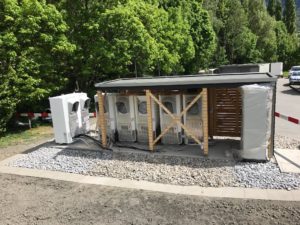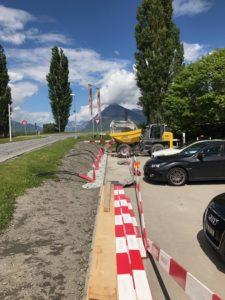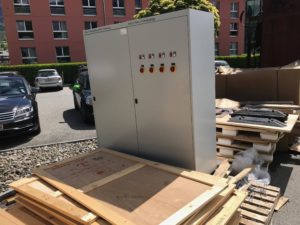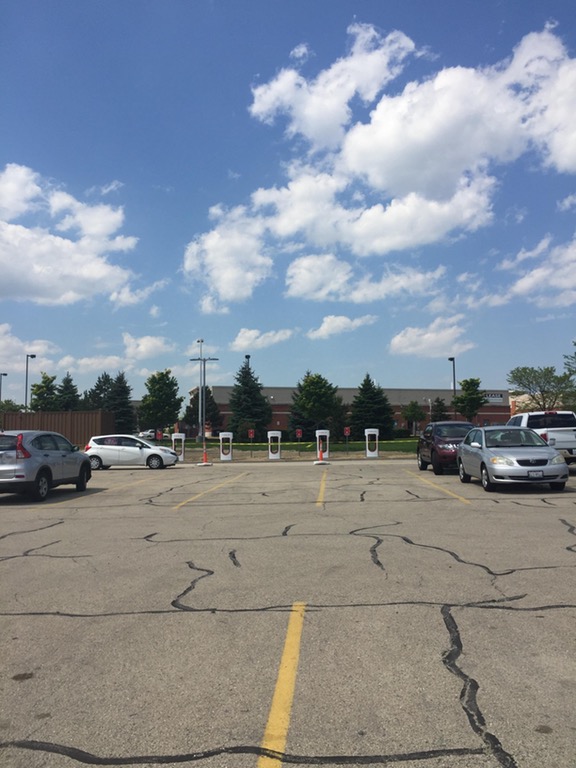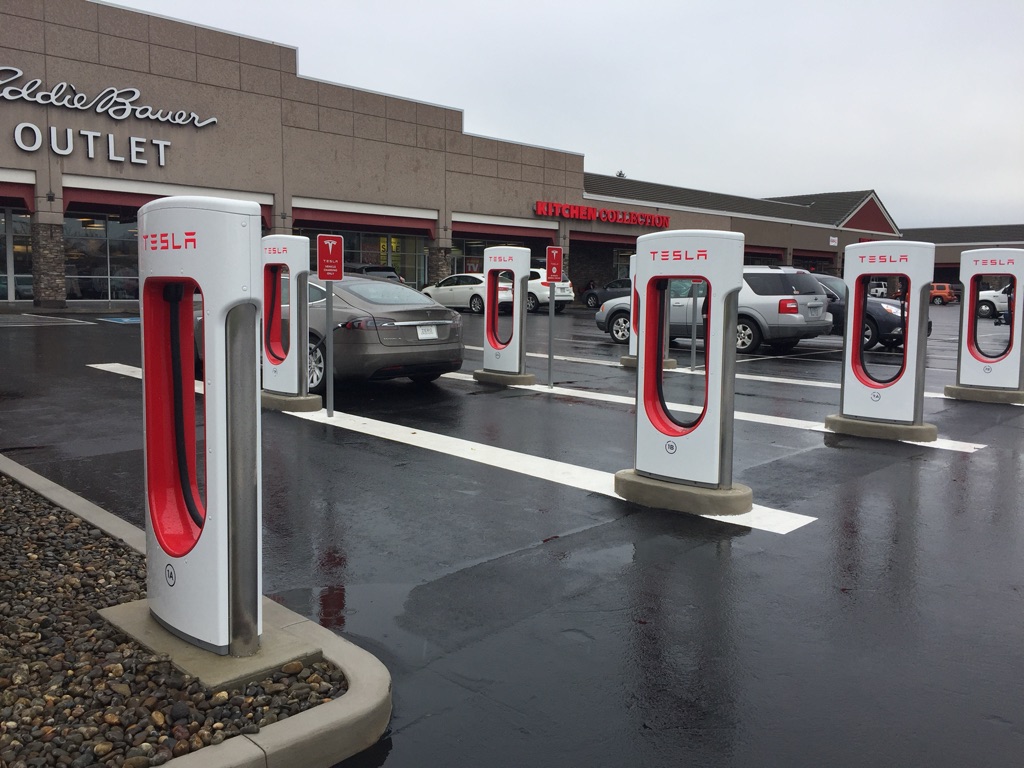

News
Sightings of Tesla Supercharger expansions taking place worldwide
Tesla recently announced that it would be doubling the size of its Supercharging network by the end of this year, as the automaker continues to set record vehicle deliveries each quarter and prepares for volume production of its highly anticipated Model 3.
“It is extremely important to us and our mission that charging is convenient, abundant, and reliable for all owners, current and future.” said Tesla early last month when the electric car maker assured existing owners of its Model S, Model X and Model 3 reservation holders that they would “never wait to charge“.
Tesla has announced an aggressive plan to mitigate Supercharger Apocalypse by way of a 3-pronged approach. First, Tesla will double the number of charging stations in its Supercharging network in 2017. Second, it is pushing to quadruple the number of destination chargers for drivers to use at hotels, retail locations and similar points of interests around the world. Third, it has implemented a cap on free lifetime Supercharging which limits owners that purchased a Model S or Model X after January 15, 2017 to 400 kWh of free Supercharger use per year, or roughly 1,200 miles of driving.
Evidence is mounting in support of Tesla’s efforts to expand existing Supercharger sites, after photos posted by Tesla drivers from around the world reveal new construction taking place at popular Supercharger locations.
The Culver City Supercharger which serves a critical hub in the greater Los Angeles is seeing its first expansion from 12 stalls to a reported 18 stalls. It’s a busy site frequented by ride sharing services and Model S and Model X drivers that are passing through Los Angeles’ infamous 405 freeway.
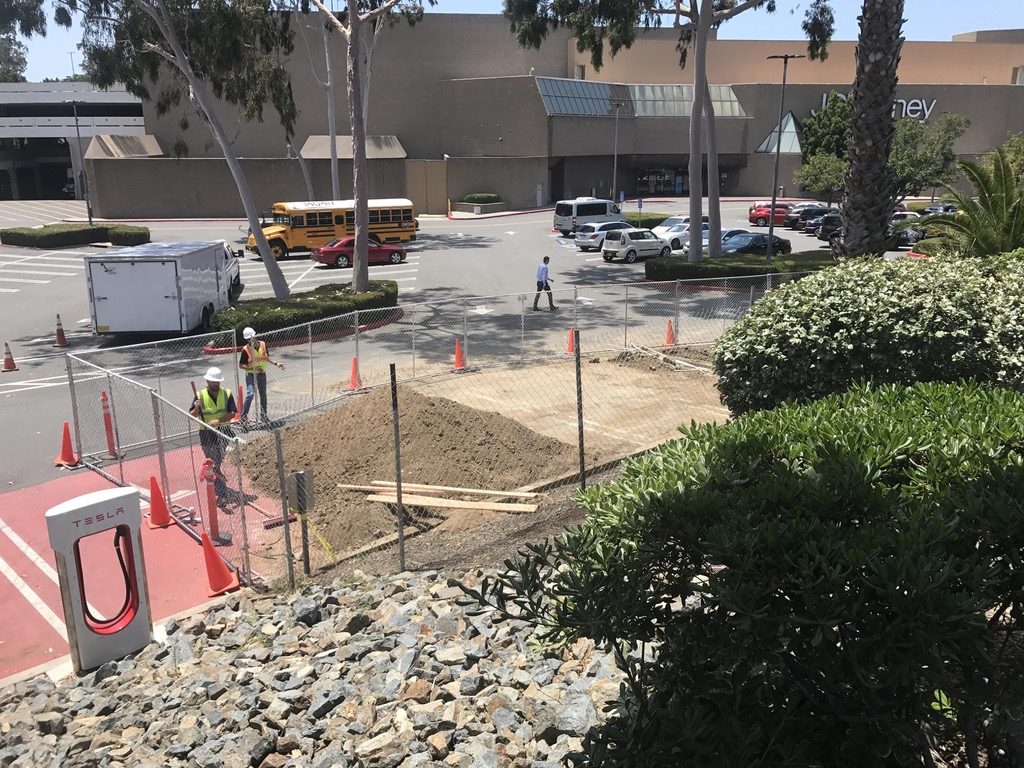
Construction taking place at the Culver City Supercharger. All stalls were full and a queue of 6 cars were waiting in line to Supercharge reports Redditor ajcadoo who took the photo.
Another busy Supercharger location at Harris Ranch, California which services weary travelers between Los Angeles and San Francisco is also getting a much needed upgrade from Tesla. Jack Bowers tweeted a photo showing the arrival of a larger PG&E transformer at the site to support the expansion of the 13-stall Supercharger station to 18 charging stalls. Crews were on site working on the expansion when the photo was taken.
Another popular Southern California charging location, the Redondo Beach Supercharger, is also getting an expansion.
PG&E at Harris Ranch, planning for larger transformer to accommodate expansion to 18 Tesla Supercharger slots. pic.twitter.com/8TsL6cno48
— Jack Bowers (@JackBowers) May 15, 2017
Maienfeld, Switzerland is getting a Supercharger of its own. The country has been a world leader in the transition to electrified transportation and is the only nation in the world with a fully electrified train system. Photos by Redditor pilif.
Swinging back to the midwestern United States and the Bolingbrook, Illinois Supercharger is almost ready to open. Bolingbrook is strategically located just west of Chicago and will service travelers in and around the greater Chicago area. Photo by Redditor pazdan.
Finally, the grand opening of the Arlington, Texas Supercharger was on May 13th and was captured on video by Insolation Station over on YouTube. They capture the Supercharger opening ceremony which incidentally appears to be playing out all over the world, by the week.

Elon Musk
Starlink passes 9 million active customers just weeks after hitting 8 million
The milestone highlights the accelerating growth of Starlink, which has now been adding over 20,000 new users per day.

SpaceX’s Starlink satellite internet service has continued its rapid global expansion, surpassing 9 million active customers just weeks after crossing the 8 million mark.
The milestone highlights the accelerating growth of Starlink, which has now been adding over 20,000 new users per day.
9 million customers
In a post on X, SpaceX stated that Starlink now serves over 9 million active users across 155 countries, territories, and markets. The company reached 8 million customers in early November, meaning it added roughly 1 million subscribers in under seven weeks, or about 21,275 new users on average per day.
“Starlink is connecting more than 9M active customers with high-speed internet across 155 countries, territories, and many other markets,” Starlink wrote in a post on its official X account. SpaceX President Gwynne Shotwell also celebrated the milestone on X. “A huge thank you to all of our customers and congrats to the Starlink team for such an incredible product,” she wrote.
That growth rate reflects both rising demand for broadband in underserved regions and Starlink’s expanding satellite constellation, which now includes more than 9,000 low-Earth-orbit satellites designed to deliver high-speed, low-latency internet worldwide.
Starlink’s momentum
Starlink’s momentum has been building up. SpaceX reported 4.6 million Starlink customers in December 2024, followed by 7 million by August 2025, and 8 million customers in November. Independent data also suggests Starlink usage is rising sharply, with Cloudflare reporting that global web traffic from Starlink users more than doubled in 2025, as noted in an Insider report.
Starlink’s momentum is increasingly tied to SpaceX’s broader financial outlook. Elon Musk has said the satellite network is “by far” the company’s largest revenue driver, and reports suggest SpaceX may be positioning itself for an initial public offering as soon as next year, with valuations estimated as high as $1.5 trillion. Musk has also suggested in the past that Starlink could have its own IPO in the future.
News
NVIDIA Director of Robotics: Tesla FSD v14 is the first AI to pass the “Physical Turing Test”
After testing FSD v14, Fan stated that his experience with FSD felt magical at first, but it soon started to feel like a routine.

NVIDIA Director of Robotics Jim Fan has praised Tesla’s Full Self-Driving (Supervised) v14 as the first AI to pass what he described as a “Physical Turing Test.”
After testing FSD v14, Fan stated that his experience with FSD felt magical at first, but it soon started to feel like a routine. And just like smartphones today, removing it now would “actively hurt.”
Jim Fan’s hands-on FSD v14 impressions
Fan, a leading researcher in embodied AI who is currently solving Physical AI at NVIDIA and spearheading the company’s Project GR00T initiative, noted that he actually was late to the Tesla game. He was, however, one of the first to try out FSD v14.
“I was very late to own a Tesla but among the earliest to try out FSD v14. It’s perhaps the first time I experience an AI that passes the Physical Turing Test: after a long day at work, you press a button, lay back, and couldn’t tell if a neural net or a human drove you home,” Fan wrote in a post on X.
Fan added: “Despite knowing exactly how robot learning works, I still find it magical watching the steering wheel turn by itself. First it feels surreal, next it becomes routine. Then, like the smartphone, taking it away actively hurts. This is how humanity gets rewired and glued to god-like technologies.”
The Physical Turing Test
The original Turing Test was conceived by Alan Turing in 1950, and it was aimed at determining if a machine could exhibit behavior that is equivalent to or indistinguishable from a human. By focusing on text-based conversations, the original Turing Test set a high bar for natural language processing and machine learning.
This test has been passed by today’s large language models. However, the capability to converse in a humanlike manner is a completely different challenge from performing real-world problem-solving or physical interactions. Thus, Fan introduced the Physical Turing Test, which challenges AI systems to demonstrate intelligence through physical actions.
Based on Fan’s comments, Tesla has demonstrated these intelligent physical actions with FSD v14. Elon Musk agreed with the NVIDIA executive, stating in a post on X that with FSD v14, “you can sense the sentience maturing.” Musk also praised Tesla AI, calling it the best “real-world AI” today.
News
Tesla AI team burns the Christmas midnight oil by releasing FSD v14.2.2.1
The update was released just a day after FSD v14.2.2 started rolling out to customers.

Tesla is burning the midnight oil this Christmas, with the Tesla AI team quietly rolling out Full Self-Driving (Supervised) v14.2.2.1 just a day after FSD v14.2.2 started rolling out to customers.
Tesla owner shares insights on FSD v14.2.2.1
Longtime Tesla owner and FSD tester @BLKMDL3 shared some insights following several drives with FSD v14.2.2.1 in rainy Los Angeles conditions with standing water and faded lane lines. He reported zero steering hesitation or stutter, confident lane changes, and maneuvers executed with precision that evoked the performance of Tesla’s driverless Robotaxis in Austin.
Parking performance impressed, with most spots nailed perfectly, including tight, sharp turns, in single attempts without shaky steering. One minor offset happened only due to another vehicle that was parked over the line, which FSD accommodated by a few extra inches. In rain that typically erases road markings, FSD visualized lanes and turn lines better than humans, positioning itself flawlessly when entering new streets as well.
“Took it up a dark, wet, and twisty canyon road up and down the hill tonight and it went very well as to be expected. Stayed centered in the lane, kept speed well and gives a confidence inspiring steering feel where it handles these curvy roads better than the majority of human drivers,” the Tesla owner wrote in a post on X.
Tesla’s FSD v14.2.2 update
Just a day before FSD v14.2.2.1’s release, Tesla rolled out FSD v14.2.2, which was focused on smoother real-world performance, better obstacle awareness, and precise end-of-trip routing. According to the update’s release notes, FSD v14.2.2 upgrades the vision encoder neural network with higher resolution features, enhancing detection of emergency vehicles, road obstacles, and human gestures.
New Arrival Options also allowed users to select preferred drop-off styles, such as Parking Lot, Street, Driveway, Parking Garage, or Curbside, with the navigation pin automatically adjusting to the ideal spot. Other refinements include pulling over for emergency vehicles, real-time vision-based detours for blocked roads, improved gate and debris handling, and Speed Profiles for customized driving styles.
